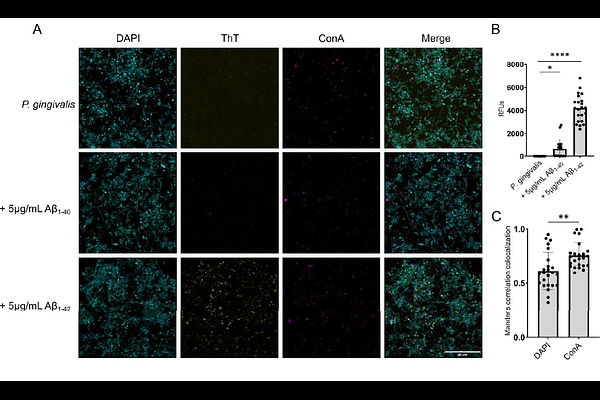Bi-directional relationship between the biofilm of Porphyromonas gingivalis and the amyloid-beta peptide.

Bi-directional relationship between the biofilm of Porphyromonas gingivalis and the amyloid-beta peptide.
Dumoulin, D.; Ghrayeb, M.; Cote, S.; Garneau, D.; Chai, L.; Frost, E.; Fülöp, T.; Beauregard, P. B.
AbstractPeriodontitis and Porphyromonas gingivalis infections are significant risk factors for the onset of Alzheimers disease (AD). Despite P. gingivalis relying on biofilm for its survival and virulence, the impact of the extracellular matrix on ADs neuropathological hallmarks was never examined. In this study, we report a bidirectional relationship between the amyloid beta (A{beta}) peptide, which plays a central role in AD, and the biofilm of P. gingivalis. Using multiple fluorescent markers for biofilm components, we observed that A{beta}1-40 inhibited biofilm formation while A{beta}1-42 increased extracellular matrix production. Also, using thioflavin T staining and atomic force microscopy, we observed co-aggregation between the biofilm and monomeric A{beta}1-40, resulting in a quicker aggregation and significant changes in aggregate structures. Our findings propose mechanistic explanations for the role of P. gingivalis as a risk factor for AD and offer potential mechanisms for the microbial involvement in AD etiology.